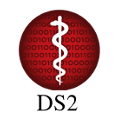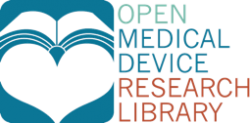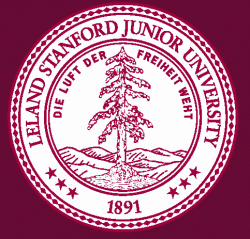Resources
ILHIE Prototype
Created in collaboration with the Illinois Health Information Exchange (ILHIE), the ILHIE Prototype redacts selected conditions from clinical summary documents using an approach called Decision Support for Data Segmentation (DS2). DS2 is designed to address the challenge that a condition can often be inferred from the medical record even after its primary diagnosis has been removed and even if a recognized list of related clinical facts has been removed. DS2 views this as a decision support problem, that is, to treat inference as a function that can be specified by a computer program based on information like machine learning over a body of records. In addition to the prototype, the open source DS2 software repository includes a suite of related tools for working with Continuity of Care (CCD) and Virtual Medical Record (vMR) documents; training classifiers and calling them from OpenCDS, a clinical decision support framework; checking for drug-drug interactions against non-redacted CCDs; and visualizing the effectiveness and the impact of probabilistic redaction through a web-based “inference analyzer.” For information and downloads, see the DS2 website.
MedIE: Medical Information Extraction
Recent US government initiatives have led to wide adoption of Electronic Health Records (EHRs). More and more health care institutions are storing patients’ data in an electronic format. This emerging practice is posing several security-related risks because electronic data can easily be shared within and across institutions. So, it is important to design robust frameworks which will protect patients’ privacy. We have designed a software package to detect security-related (particularly drug abuse) events in medical text. Several applications can use this information to make the hospital systems more secure. For example, portions of the clinical reports which contain description of critical events can be encrypted so that it can be viewed only by selected individuals. For more information about the software, please visit the following links: Drug Abuse Recognizer (Demo), Drug Abuse Recognizer (software)
Drug abuse events in clinical text do not appear in isolation. Associated with a drug abuse event, there may be description of some problems (like lung cancer, cardiac arrest etc.) that the patient is experiencing. There may also be reference to some treatment that has been prescribed for the patient. Moreover, patient may have also undergone some laboratory tests etc. To capture these kind of concepts, we developed a software to detect clinically relevant terms in free-form text. For more information about this software, please visit the following links: Medical NER (demo), Medical NER (software)
Charm: A Tool for Rapid Cryptographic Prototyping
Charm is a framework for rapidly prototyping advanced cryptosystems. Based on the Python language, it was designed from the ground up to minimize development time and code complexity while promoting the reuse of components.
Charm uses a hybrid design: performance intensive mathematical operations are implemented in native C modules, while cryptosystems themselves are written in a readable, high-level language. Charm additionally provides a number of new components to facilitate the rapid development of new schemes and protocols.
For more information about visit the Charm website.
Open Medical Device Research Library (OMDRL)
The OMDRL provides access to medical devices for research in trustworthy computing. The Library enables recycling of otherwise discarded resources – putting them to good use in research and development to improve the trustworthiness of software-based medical devices.
Donate. Patients, physicians, and professionals who interact with medical devices are encouraged to donate to the collection. OMDRL welcomes donations of any implantable medical devices that use wireless communication; examples include heart rate sensors, pacemakers, defibrillators, drug delivery systems, and neurostimulators, among others. It also accepts donations of certain non-implantable devices that are useful to security researchers, like infusion pumps.
Borrow. The OMDRL lets researchers focus on analysis and discovery by giving its members access to a resource that would otherwise be too expensive or difficult to acquire. The Library catalogs and sterilizes devices that are intended for in vitro research only. Human reuse is not permitted.
If you are interested in donating or borrowing a device, visit the OMDRL website for more information.
HIPAA As a Logic Program
The Logic formalization of HIPAA is a translation of the HIPAA law into a logical programming language, Prolog. The Prolog translation can be executed and reports whether a given action complies with HIPAA. We translate the HIPAA regulation into Prolog one statement at a time. You can verify our translation by examining the side-by-side comparison. We envision this project to be a collaborative open-source effort. To learn more and to get access to the demonstration visit this link.
Policy Authoring & Reasoning (PATRN) Toolkit
 The PATRN (pronounced as pattern) stands for Policy Authoring & Reasoning Toolkit. The PATRN Toolkit is a graphical Model Integrated Computing (MIC) tool, created in the Generic Modeling Environment (GME). The PATRN Toolkit was created to provide a unified way to create and model ontologies, policy templates and to compose the ontologies with the policy templates to define privacy policies. Furthermore, it was created, to facilitate to formal reasoning on composed privacy policies. The functionality of the PATRN toolkit is provided using MIC tools such as GME and FORMULA. For information and downloads, see the PATRN website.
The PATRN (pronounced as pattern) stands for Policy Authoring & Reasoning Toolkit. The PATRN Toolkit is a graphical Model Integrated Computing (MIC) tool, created in the Generic Modeling Environment (GME). The PATRN Toolkit was created to provide a unified way to create and model ontologies, policy templates and to compose the ontologies with the policy templates to define privacy policies. Furthermore, it was created, to facilitate to formal reasoning on composed privacy policies. The functionality of the PATRN toolkit is provided using MIC tools such as GME and FORMULA. For information and downloads, see the PATRN website.





